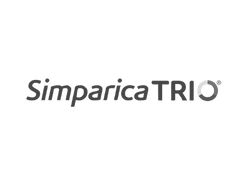The signs of worm infection in sheep often go unnoticed until the problem becomes severe. As you can see in figure 1, by the time the signs of worms (clinical effects) the producer has experienced significant losses in productivity and breaks in wool.

EWES
Around the time of lambing, ewes lose their acquired resistance to worms. This occurs from 2-4 weeks before lambing to 4 to 9 weeks after lambing, but may persist up to 14 weeks or more in individual ewes. This is brought on by the metabolic demands of the foetus and lactation and is not thought to be caused by the priority of the ewe to sustain the pregnancy and produce milk, which calls for preferential partitioning of protein. This phenomenon is called ‘periparturient relaxation of resistance’ or PPRR.

Because of their high egg output, lambing and lactating ewes require special attention given to their worm control. Many producers drench ewes with a long-acting drench one month before lambing commences. This is a good strategy to prevent pasture larval contamination, particularly when there is already contaminated pasture due to long grass, rain and cool weather. These conditions favour larval survival and will allow a build-up of larval numbers on pasture to dangerous levels.
LAMBS AND WEANERS
Lambs are born without any immunity (resistance) to internal parasites, but begin to develop immunity usually after they are weaned. When young sheep are exposed to internal parasites for about four months, it leads to ‘acquired resistance’. Resistance to parasites develops slowly for Black Scour Worm and Small Brown Stomach Worm (8-15 months of age), while resistance to Barber’s Pole Worm may develop at younger ages.
Weaners are the most vulnerable group of animals, as they have the highest susceptibility to internal parasites as:
- They have not yet developed immunity to parasites.
- Due to their transition from mothers milk to pasture they may suffer nutritional deficiencies.
- Many weaners have low weaning weight (e.g. Merino weaners under 25kg) and therefore have few body reserves. They struggle to mobilise sufficient energy to fight off worm infestations.
- Worms cause a direct lowering of appetite of infected

he best ways of preparing low contamination pastures are by:
- Spelling pasture over summer. Removing stock for 3 months over a dry, hot summer removes over 90% of worm larvae.
- Grazing with cattle, then allowing re-growth of pasture.
- Grazing with dry adult sheep. This is especially effective if the sheep are treated with a long-acting injection or a bolus prior to introduction
- Cutting hay from paddock, then spelling for a few months. Opening up the sward exposes worm larvae to sunlight, which kills a high percentage of them.
- Ploughing the paddock and growing a crop
- Burning the grass and encouraging new growth.
- Using crop stubble (with supplements).
- Feedlotting lambs are free from reinfection
Survival of barber’s pole worm infective larvae on pasture at various daily maximum temperatures and 60% relative humidity










































